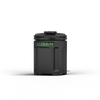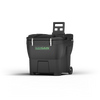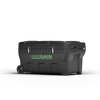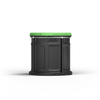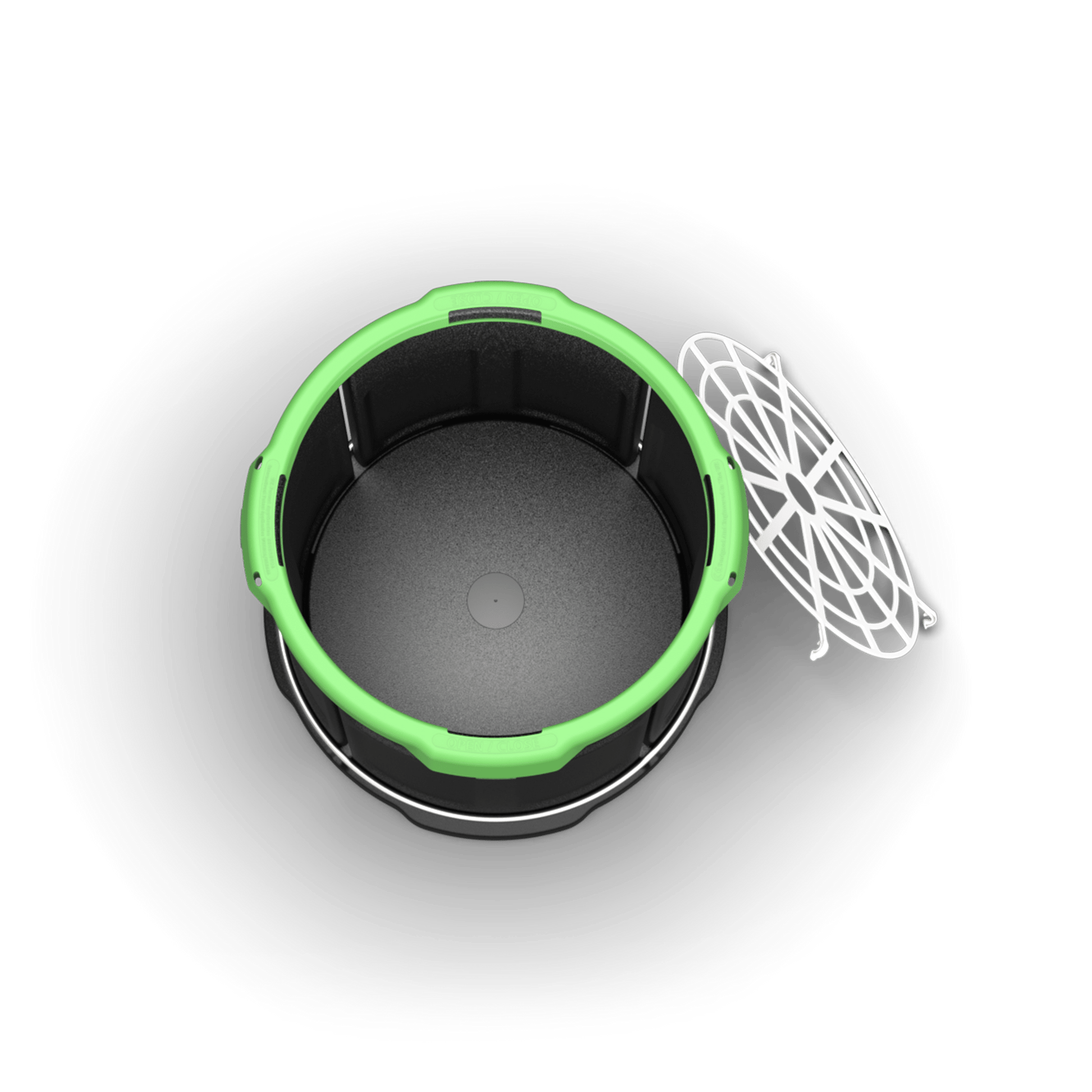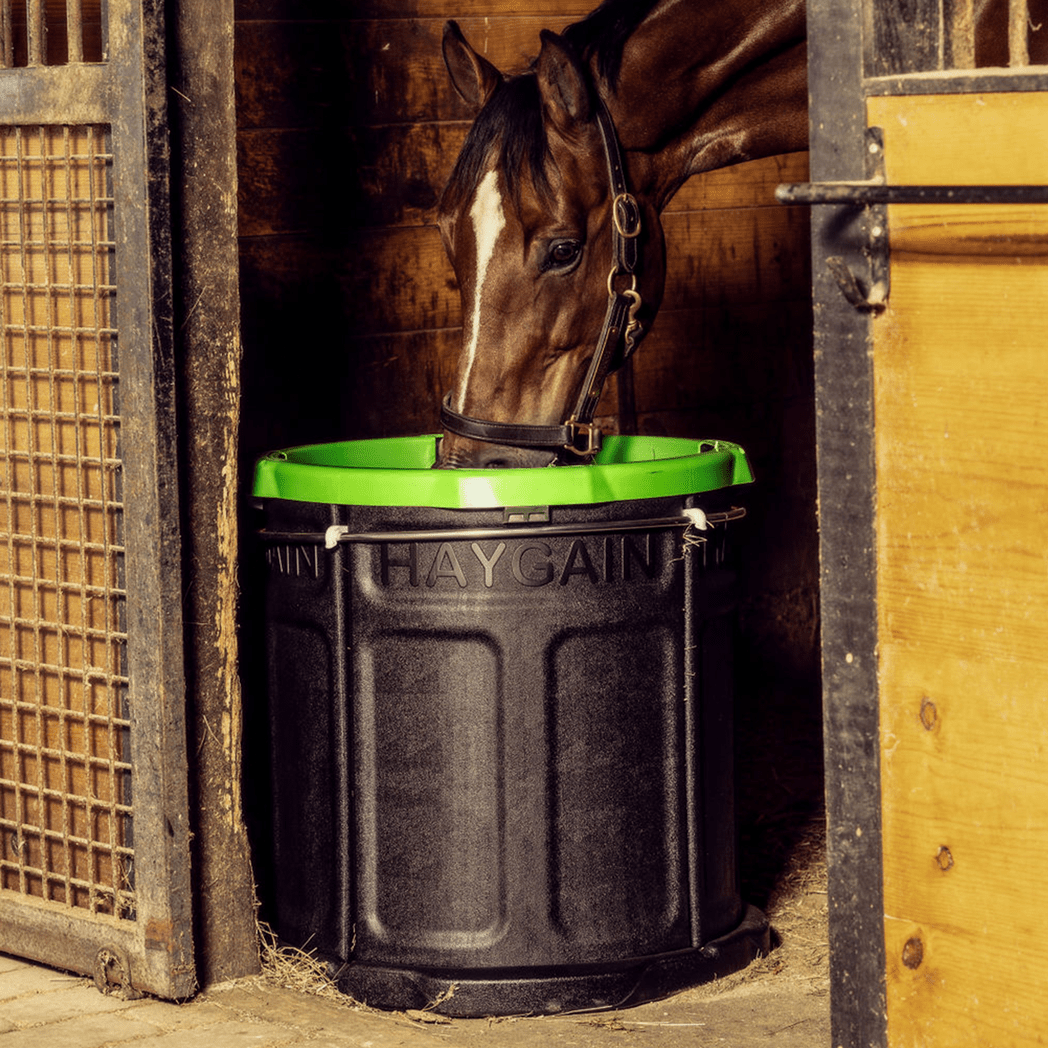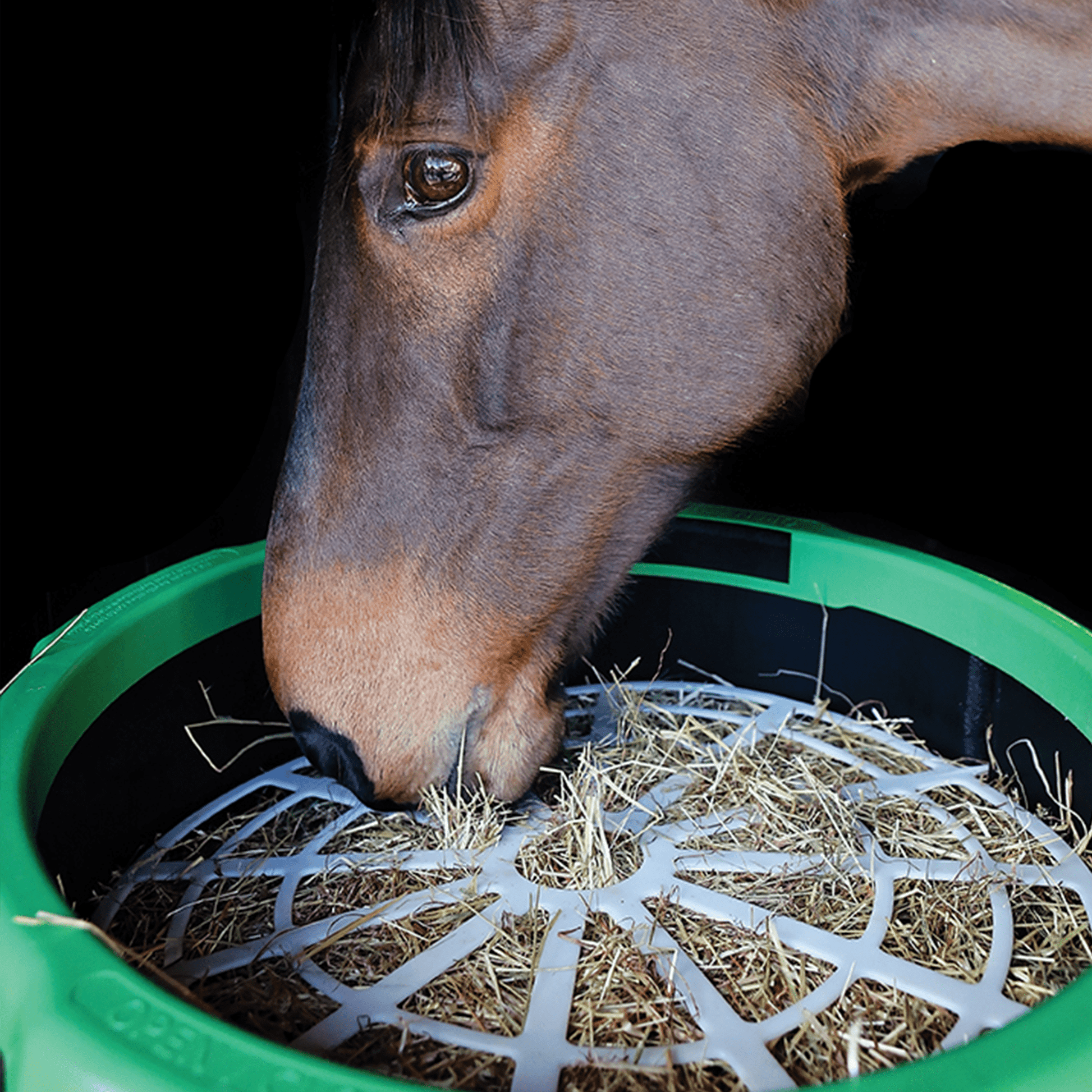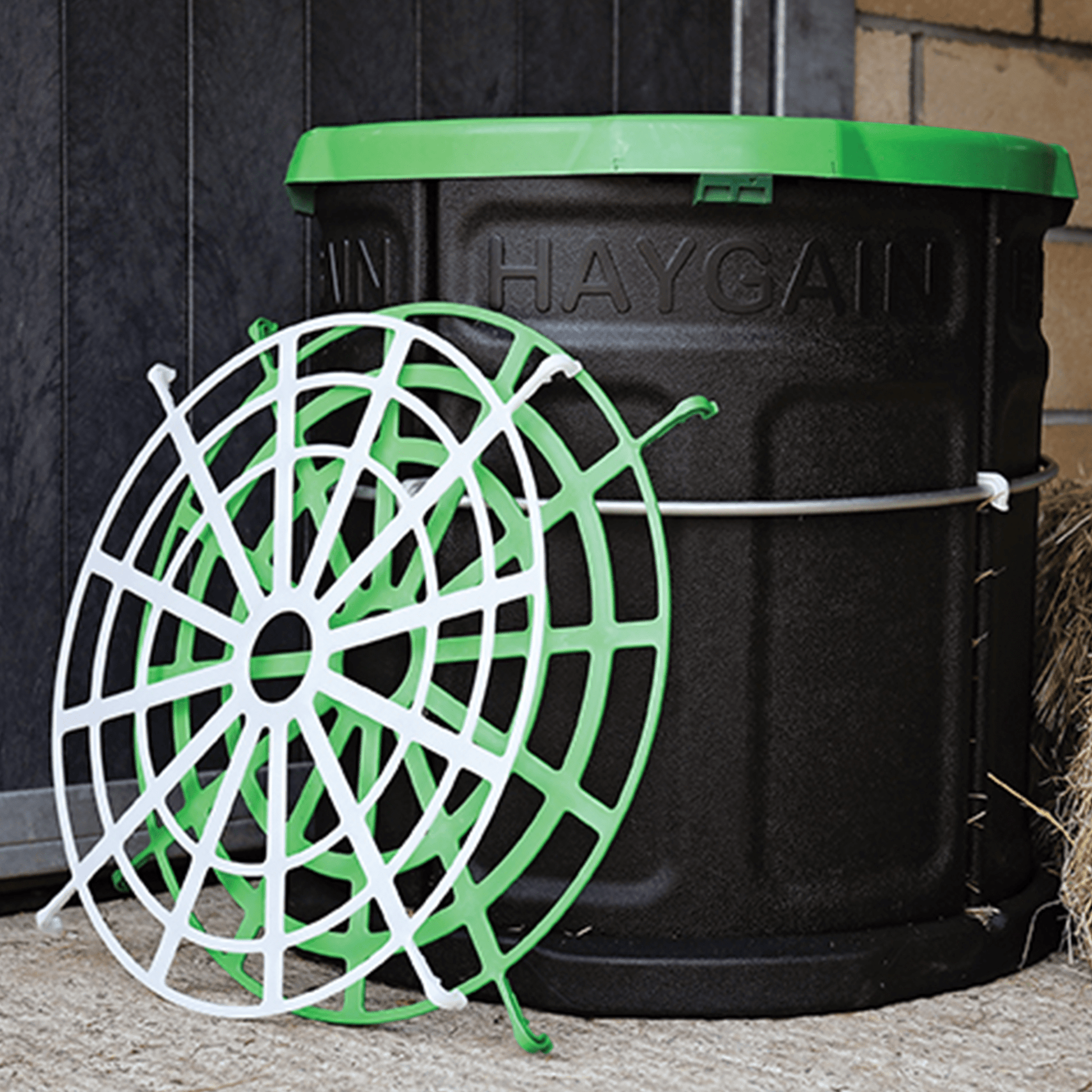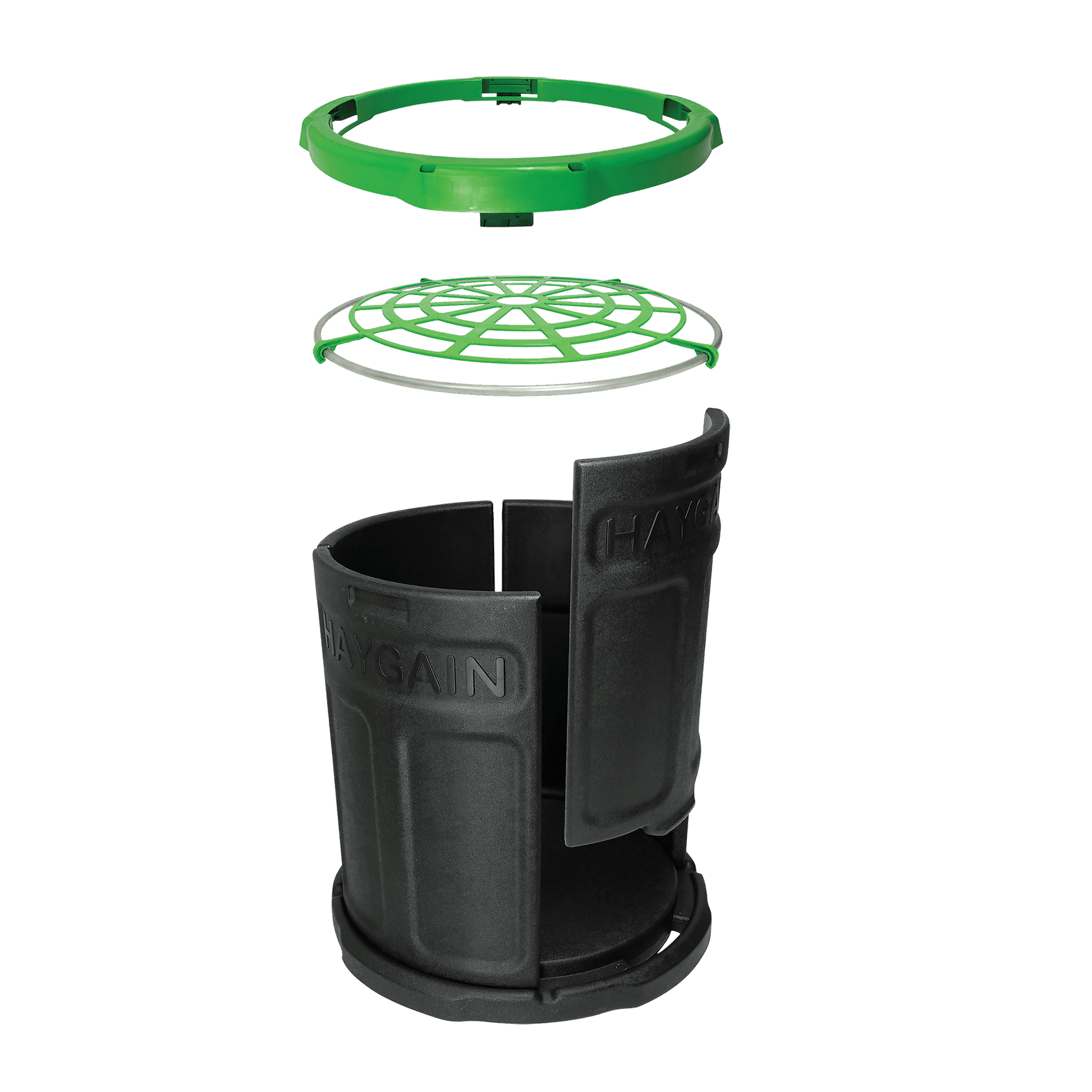The Haygain Forager Slow Feeder
The Haygain Forager Slow Feeder
The Haygain Forager Slow Feeder
The Haygain Forager Slow Feeder
- Do you have a question? We’re here to help. Contact us today!
WHY BUY THE FORAGER?
-
Reduces forage wastage
-
Capacity for up to 26lbs of forage
-
Proven to support digestive health
The Haygain Forager Slow Feeder

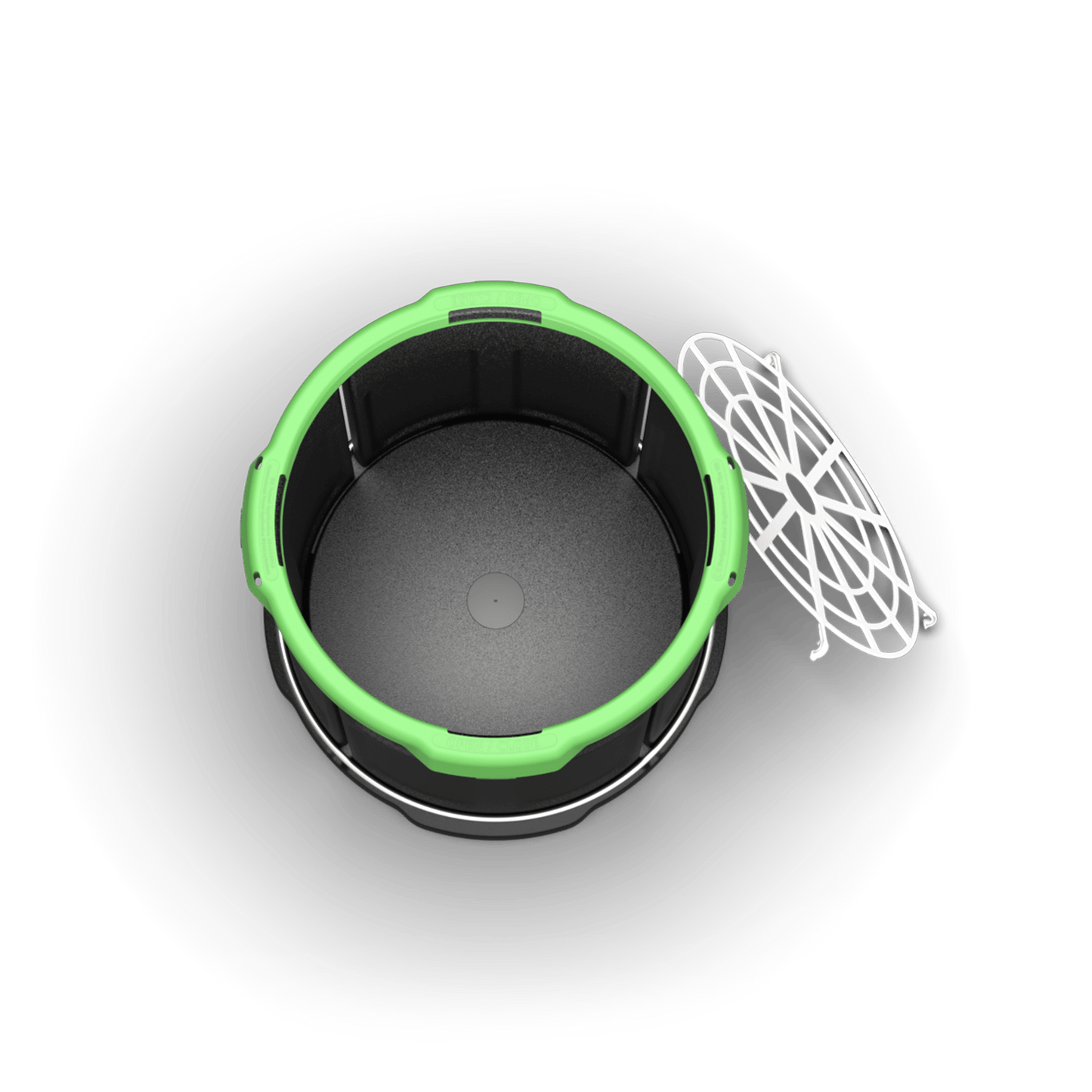
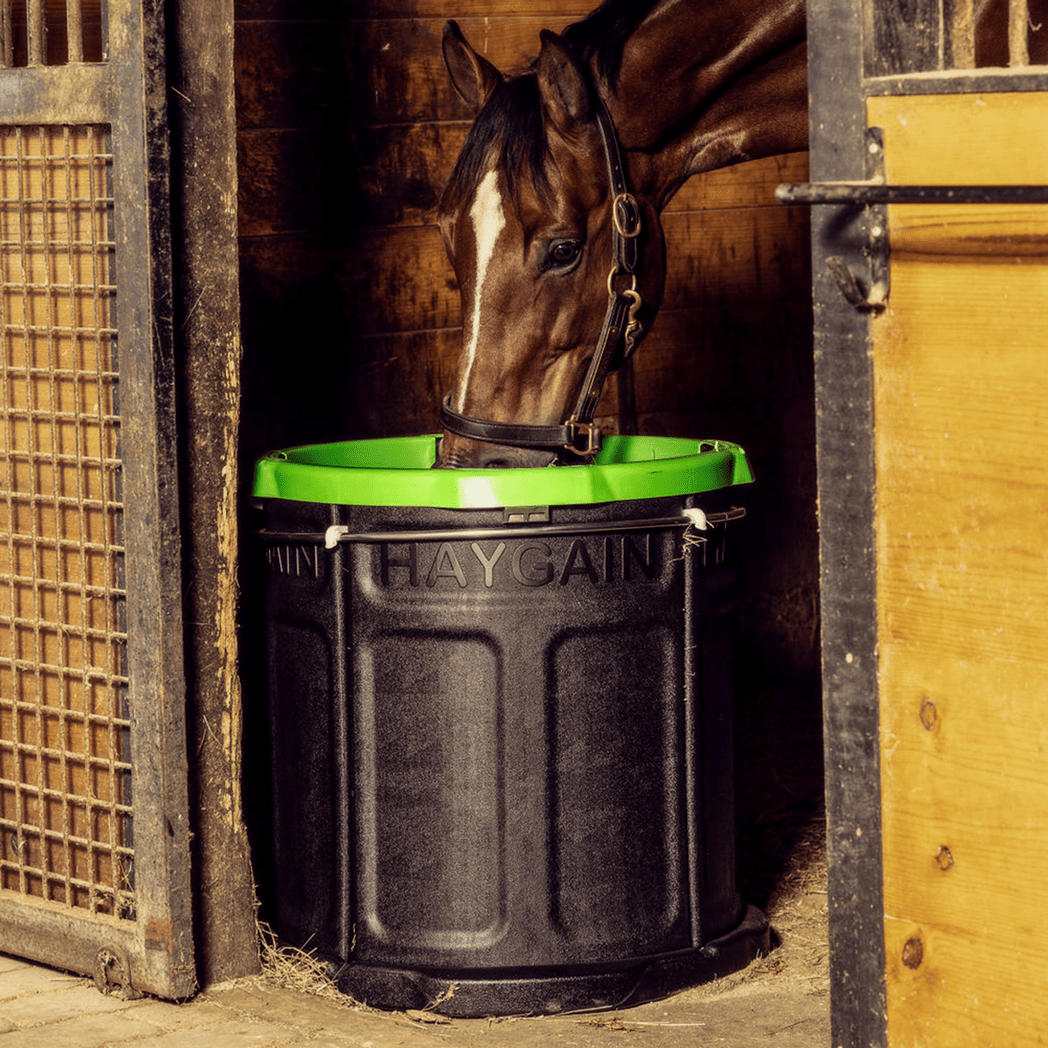

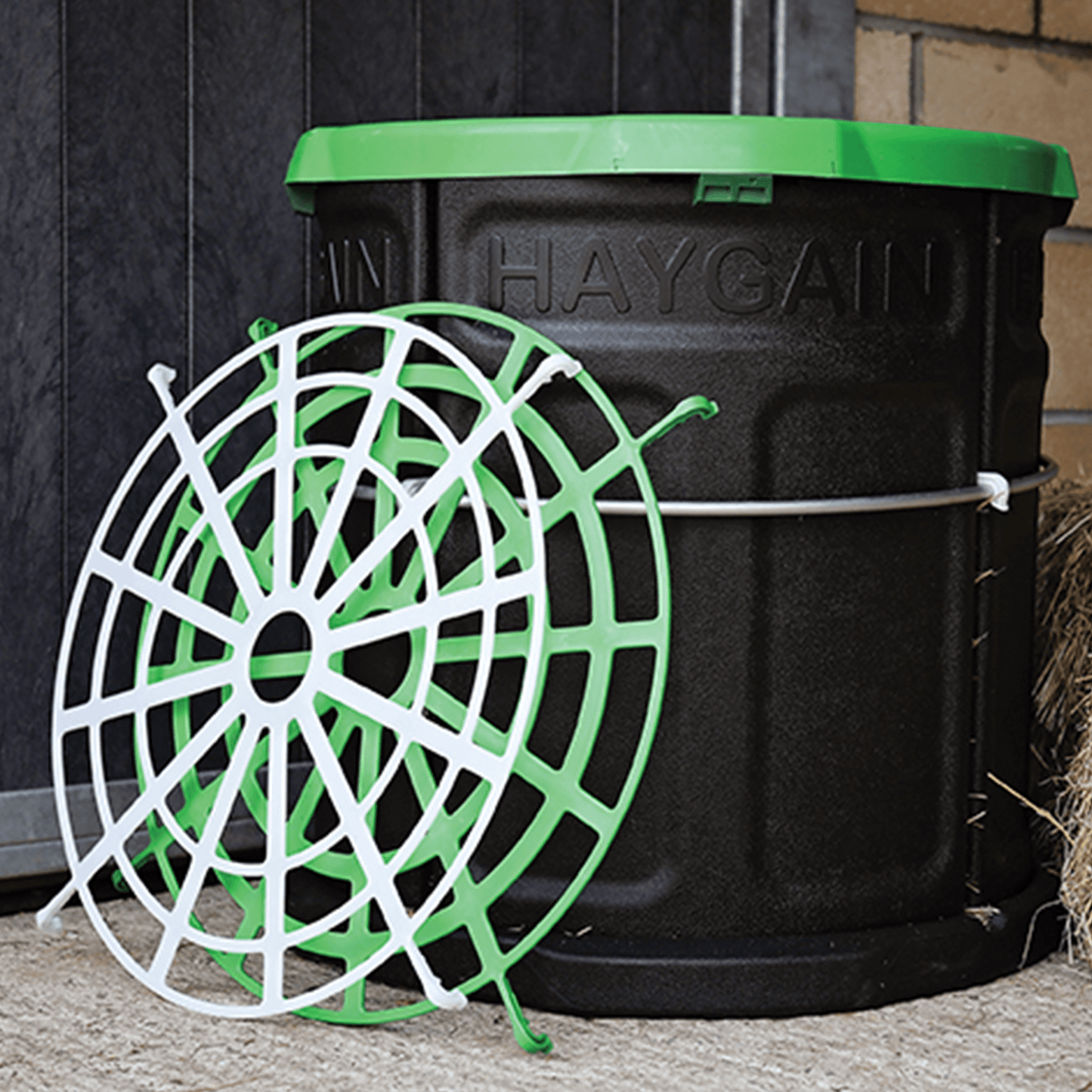

BENEFITS
As grazing animals, horses have digestive systems that are designed to process forage in small quantities over several hours. The Forager Slow Feeder facilitates this in modern horse management by extending mealtimes without frustrating your horse. More time eating equals less time for boredom behaviours and food scarcity stress, especially for horses on restricted diets.
Prolonged chewing produces saliva that protects the horse’s stomach lining from naturally occurring acids. This helps reduce ulcer risk.
The Forager facilitates eating in a lowered-head position. This allows drainage of respirable particles and natural feeding posture in the jaw, neck and back.
Containing hay off the floor keeps it clean and reduces the waste of forage trampled into bedding, manure and urine.
PRODUCT DESCRIPTION
Two interchangeable regulator grids – easy and standard – allow individualization for each horse’s needs or to enable a gradual introduction to slow feeding. The regulator clicks on easily and securely for easy filling. Secured to a metal ring on the outside of the cylinder, the grid stays level as it lowers with forage consumption.
The base of the sturdy, durable Forager can be filled with sand for extra stability and fixing points to secure it to the stable wall if desired.
Designed to allow light and air into the cylinder, the Forager encourages horses to eat as nature intended.
Easy to assemble and break down for cleaning and travel. For the horse’s safety, The Forager has been designed to fall into it’s component parts when too much force is applied. You can simply rebuild it from these component parts as indicated in the beginning of this manual.
SPECIFICATIONS
Hay Capacity: Up to 12kgs (25lbs) of forage
Additional Features: Fully collapsible to allow for easy cleaning and portability
Product Dimensions: 70 cm Diameter x 72 cm Height 72
Weight: 13.6kg (30lbs) empty
INCLUDES
1 Easy Regulator (White)
1 Standard Regulator (Green)
DOWNLOADS
WARRANTY
Your Haygain® Forager comes with a 1 year warranty. The warranty covers the replacement of your Haygain® Forager or a part of it. The regulators are considered a consumable and therefore not included in the warranty. All replacements are at the discretion of Haygain®. Read more here.
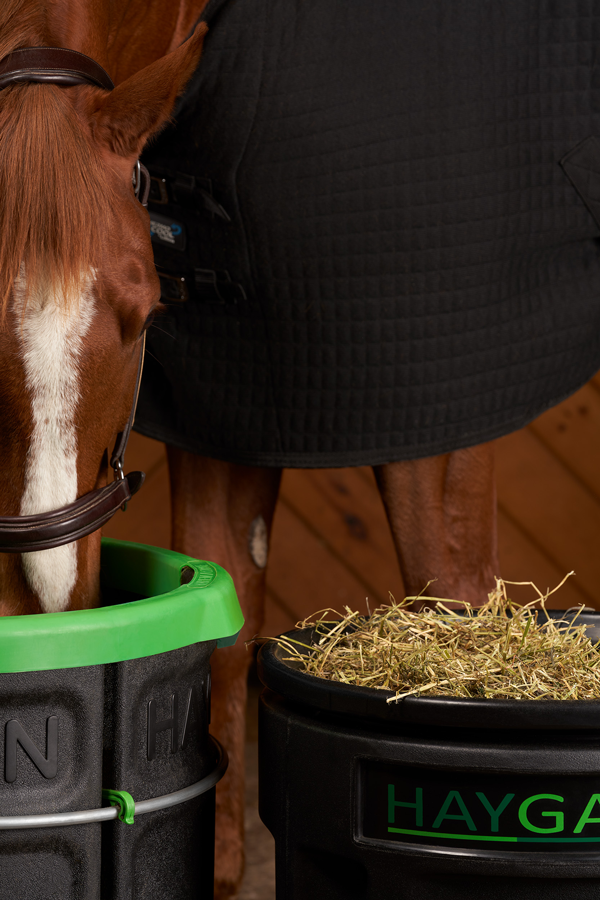
ABOUT HAYGAIN
Horses were meant to live in the wild.
They don't.
Our practical, science-backed equipment addresses the equine health challenges that come with modern equine management.
As herd animals, horses have physical, psychological and behavioral needs that are difficult to fulfil in domesticated life.
Equine veterinarians, nutrition and behavioural experts, scientists and -- above all -- true horse people contribute to the design, manufacture and
evolution of Haygain's products.
We are proud to help you help your horse. And to help horses live healthy, happy lives.
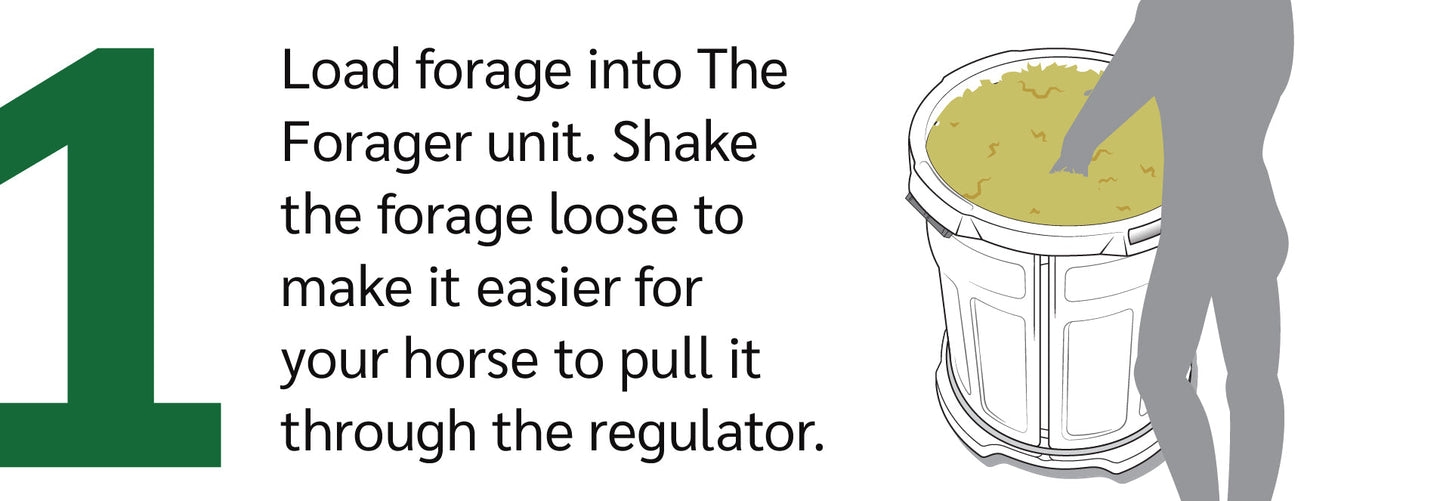
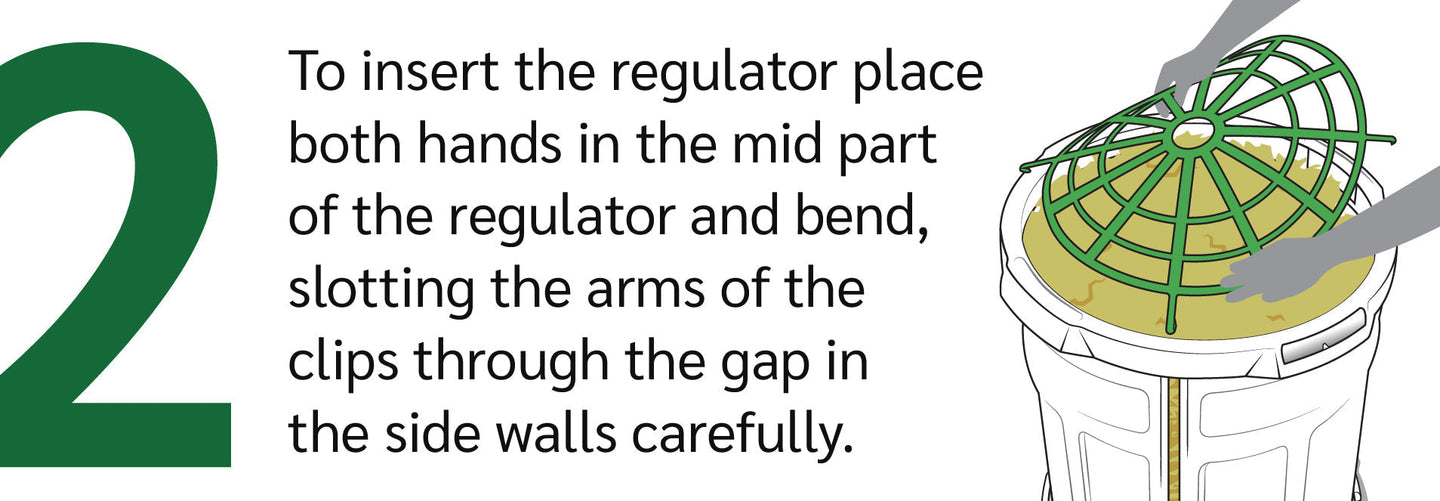
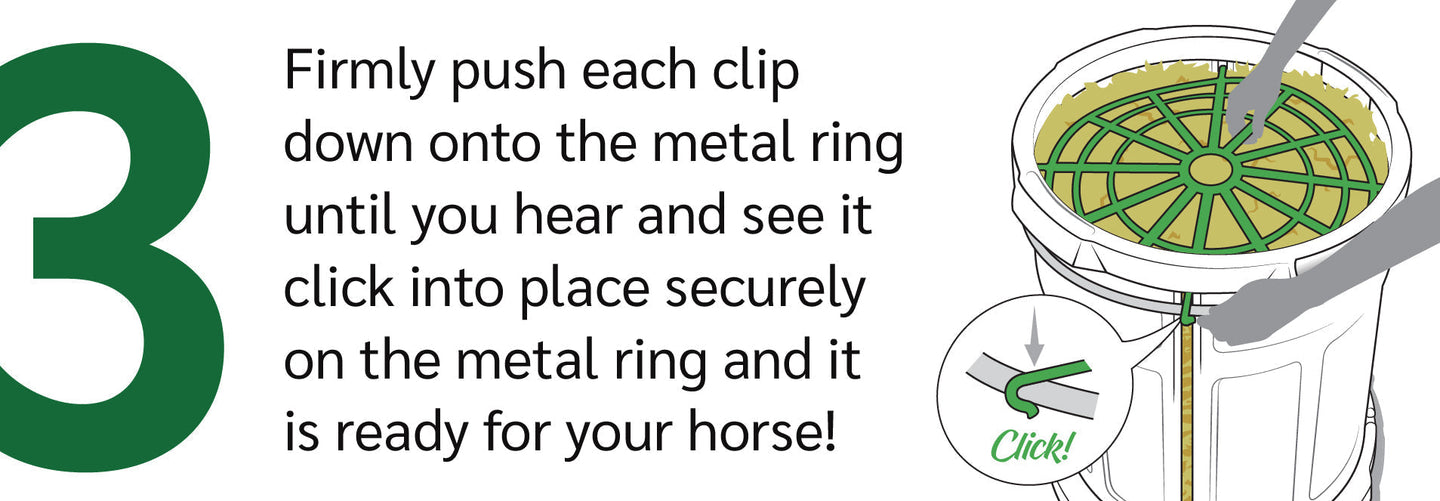
FREQUENTLY ASKED QUESTION
Does The Forager really slow down eating? The holes look quite big.
Does The Forager really slow down eating? The holes look quite big.
The regulator of The Forager is less flexible than a haynet and therefore increases the difficulty of extracting hay through the holes. Testing was completed on several different variables, including loose hay and haynets, and showed an average 61% and 35% respective reduction with the easy white regulator and 106% and 73% respective reduction with the standard green regulator.
How does the feeding rate compare to a trickle/small-hole haynet, as opposed to a standard haynet?
How does the feeding rate compare to a trickle/small-hole haynet, as opposed to a standard haynet?
Research by Ellis et al., (2015) looked at 4 haynets of varying sizes to establish the effect forage presentation had on intake behaviour. All smaller holed haynets (25-30 mm) were equally successful in slightly slowing feed intake down with an increased intake time of around 5 minutes/kg compared with the ‘large-holed’ haynet (75 mm). Night observations showed no difference in the time to finish eating between the haynets. Ellis, A, D. Fell, M. Luck, K. Gill,L. Owen,H. Briars, H. Barfoot, C. Harris, P. (2015) Effect of forage presentation on feed intake behaviour in the stabled horse. Applied Animal Behaviour Science. 165. 88-94. In- house testing of the Haygain Forager has shown a reduction in intake rate by 35% compared with the white regulator and 73% with the standard regulator when compared to a haynet. CCTV footage has shown horses eating into their ration into the early hours of the morning, with the added benefit of being able to eat in a natural feed position.
How long does a regulator last?
How long does a regulator last?
The longevity of the regulator will vary depending on use but most customers can expect their regulator to last 3 months or longer.
How does the regulator stand up to horses’ teeth?
How does the regulator stand up to horses’ teeth?
The regulator is made from a flexible engineered food-grade plastic. This material is designed to be more durable than a haynet but more flexible than a metal grid (which has also been known to damage a horse’s teeth). The regulator will experience normal wear and tear from repeated use and will need to be replaced occasionally, but a worn regulator should not pose a safety or health hazard to your horse.
How Is the regulator secured to prevent removal by the horse?
How Is the regulator secured to prevent removal by the horse?
The regulators are secured using an EasyOn click and secure system, which allows you to easily fill The Forager while remaining secure when locked into place so that the horse is unable to remove them.
Is The Forager kick-proof?
Is The Forager kick-proof?
The Forager has been designed to withstand a normal amount of horse interaction, including pawing, kicking, and scratching. We have observed horses interacting well and only in a playful manner with The Forager and have not seen them get frustrated enough to cause damage.
What is the purpose of the steel ring?
What is the purpose of the steel ring?
During the development of The Forager it became clear that the regulator needed to be attached to the outside of the feeding area. The steel ring is what the regulator attaches to and what prevents the horse from tipping or by-passing the regulator. It is one of the components that makes The Forager unique and is an important part of its successful design.
What are the methods of securing The Forager? / Can The Forager be pushed over easily?
What are the methods of securing The Forager? / Can The Forager be pushed over easily?
You may fill the base of the Forager with ~20 kg/45 lbs kiln-dried sand, or you may secure it to a metal tie-up ring on a wall on one or both sides using the tie up holes on the green top ring. The tie-up ring should be roughly the same height as the tie up holes.
I soak my hay - how does The Forager cope with wet hay (especially if you must weigh it down with sand)?
I soak my hay - how does The Forager cope with wet hay (especially if you must weigh it down with sand)?
The sand is enclosed within the base; therefore, you can use soaked hay/dry hay/steamed hay/haylage in The Forager. The additional benefit of feeding soaked hay through The Forager is the drainage channels between the side walls.
What size pony can feed from The Forager?
What size pony can feed from The Forager?
The Forager can comfortably feed ponies as small as 10 hands.
